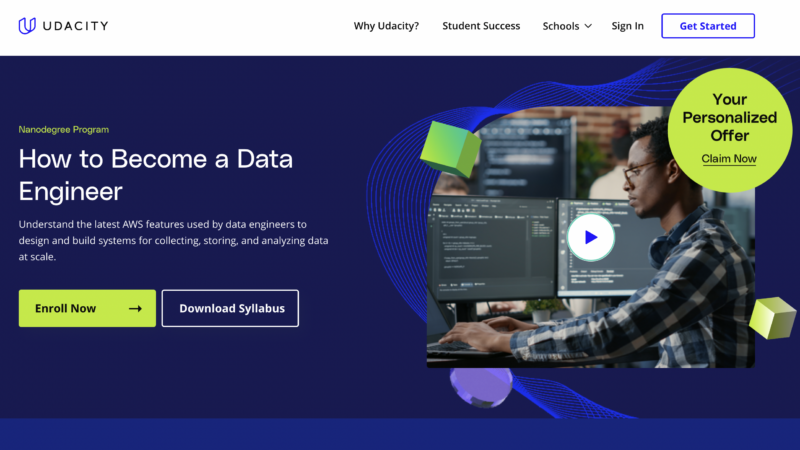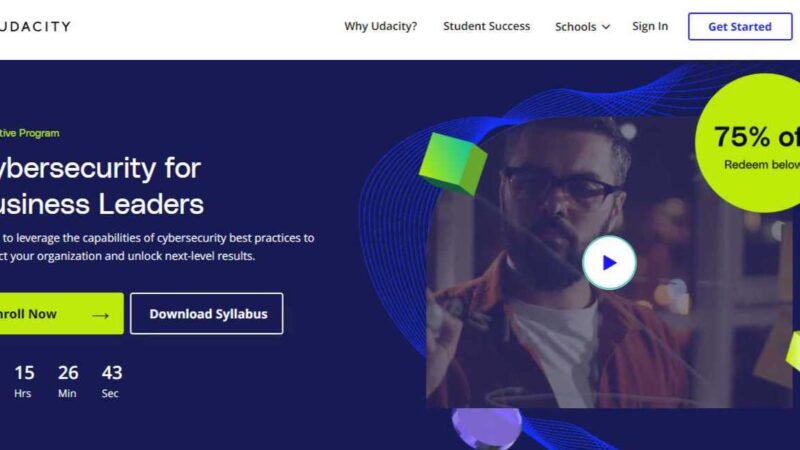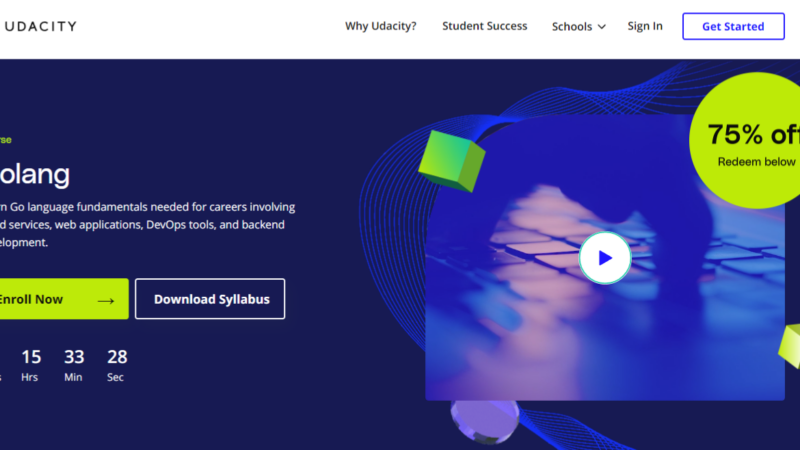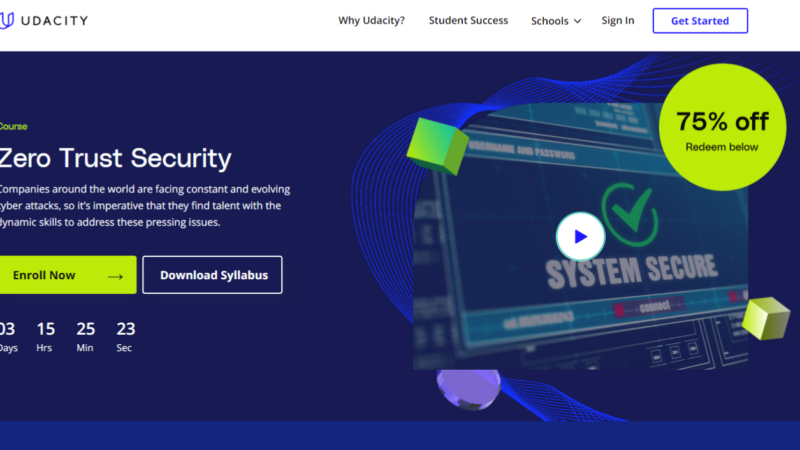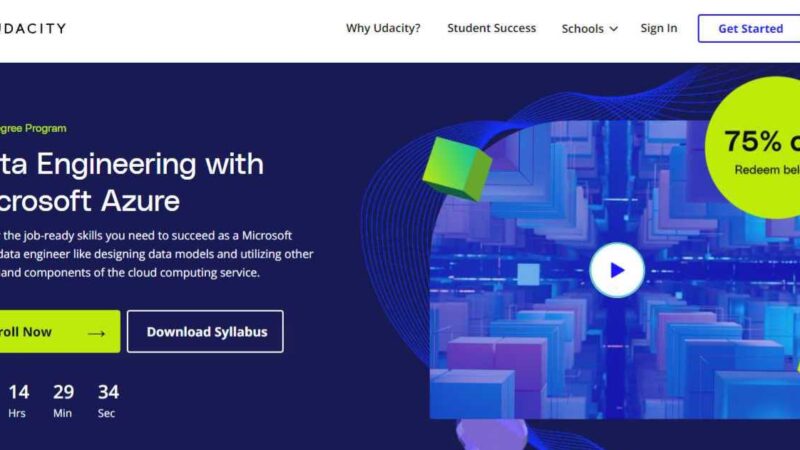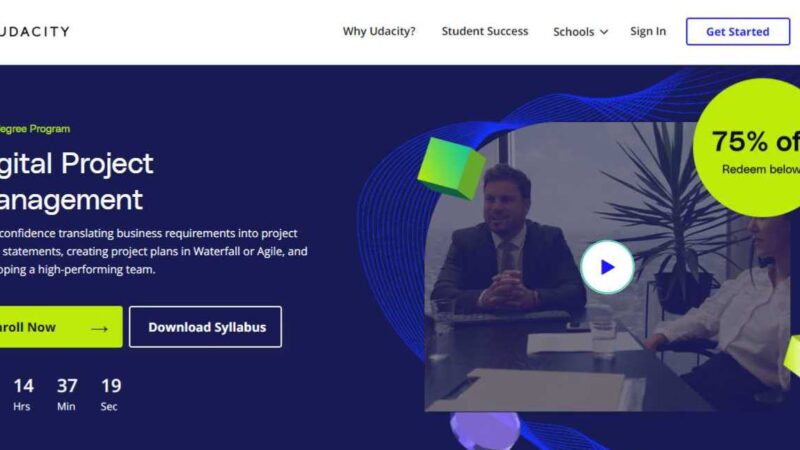Udacity Data Architect Nanodegree Review

Businesses these days are running into a ton of issues when it comes to managing their data. Some of them are overwhelmed and unsure of where to turn to find the proper solutions to get a good grasp on their data. That is where a data architect can help, providing companies with sophisticated options to help them get a hold of their data so that it’s an issue of the past.
With the Become A Data Architect Nanodegree, you get a good look into what it takes to be a data architect, with a fusion of in-depth content and hands-on projects. Before you sign up, we have dug in deep and reviewed the entire course, helping you to decide if it is a good option for you. Is it worth it? Let’s find out!
About Udacity
Udacity is an accredited online academy with the goal of bringing IT courses to anyone interested in breaking into the field. They have been on the web for a decade, starting off with just a few free courses and evolving into what they are today. You can find everything IT related, from the business side to the development side and beyond.
Apart from their free courses, they offer nanodegrees that act as a certification program. Most of these were developed in collaboration with top names in the industry, mostly geared toward tackling real issues and giving students real examples to work with so they can transition from student to professional fast.
Nanodegree Extras
The thing that brings in the most attention to Udacity is their nanodegrees. These short-term courses are created to go in-depth over a topic, giving learners all that they need to break into the field. Each section within nanodegrees has projects that mimic real issues that industries are facing, allowing learners to leave the course with hands-on experience. Each nanodegree comes with:
- Flexible Learning
- A Technical Mentor
- A Community of Learners
- Career Services
- Hands-On Experience Through Projects
- A-List Instructors
Meet your Instructors
Udacity goes above and beyond in its search for instructors. You will find decades of experience with the instructors for this course, many of which have gone on to create their own businesses and software. Your instructors for this course are:
Ben Larson
Ben has a Ph.D. in Decision Sciences, which led him directly into the field of data architecture and data science. He has more than 15 years of experience in the industry, bringing a lot to the table for learners that are looking for solid advice.
Shankar Korrapolu
Shankar used his 3 decades of work in the field to found the startup OK2. He is behind the software that helps developers build games with his cross-platform engine that makes building faster and less expensive. He’s bound to be a role model for a few of you out there.
Shrinath Parikh
Shrinath is a data architect that specializes in helping organizations transform the way they deal with data. He has worked with several top names in the field, including AWS and Google just to name a few. He has more than 15 certifications, helping him become a well-rounded developer with a ton of experience to share.
Vijaya NelaVelli
Vijaya founded a data architecture consulting company that helps companies on their journey through digital transformation. She has experience with best practices and frameworks and architecture strategies that you’ll want to keep your eyes open for.
What are the Prerequisites?
This course is designed for students that already have a bit of experience with programming languages. You don’t waste any time using these skills, so they are something that you need from day one. The specific prerequisites that all learners looking to sign up for the course need are:
- An intermediate level of Python and SQL
- An understanding of Relational Database Management
- The concepts of batch processing and stream processing
- Knowledge of operating systems UNIX, Linux, and MS-Windows
- A basic understanding of ETL/Data Pipelines
Course Breakdown
This course is meant to provide learners with all they need in order to manage data. It is geared toward transforming data into something that organizations can incorporate into their system to make things run smoother for a better way to do business.
Data Architecture Foundations
The first lesson of the course is dedicated to introducing the idea of data architecture. You’ll learn why it is important for organizations and some of the main issues that they are facing in the struggle to manage data. You’ll work with models and learn about how to evaluate data sets, ultimately building reports which help you make data-driven decisions.
Project: Designing an HR Database
You’ll work with a database that is used for a Human Resources department. You’ll take on the role of an analyst, taking requests from management to help them get ahold of their data and create a system that helps their specific needs.
Designing Data Systems
During this part of the course, you’ll build a cloud-based data warehouse. You’ll evaluate, design different elements necessary in the development of warehouses, getting experience with different types before you take off to the section project.
Project: Design a Data Warehouse
From the get-go, you will design and build data architectures. You’ll gather data from Yelp and a Climatic website, transforming it into useable and moveable data that goes directly into a warehouse. Track temperatures and keep track of reviews and photos with these apps using your formula. The end goal is to write the right SQL to find the impact of the data you’re collecting.
Big Data Systems
This section takes a look at some of the major problems that businesses are facing when dealing with large amounts of data. There are so many companies out there with data management systems that just don’t work, creating an issue that keeps piling up. You’ll work with internal architectures typically used to handle large loads of data and work with big data tools. By the end, you’ll know how to evaluate NoSQL and dive deeper into the function of databases.
Project: Design an Enterprise Data Lake System
You’re given a real case that is inspired by issues some organizations are facing. Using the data given, you’ll take on the role of Big Data Architect, analyzing their current architecture and developing your own design to help them evolve.
Data Governance
You’ll start to learn about metadata in this section, building a management system that identifies solutions for issues surrounding data. This course ends with a look at Master Data and Master Data Architectures which you can use to guide you in the data governance process.
Project: Data Governance at Sneaker Park
In this last project, you’ll work on data governance by creating solutions for an online shoe store. You’ll work with a defined set of rules, using them to create your proposal. You will ultimately define the roles and responsibilities necessary to get the job done.
How Long Does It Take?
With Udacity, learners that enroll in nanodegrees have the option to take up flexible learning. This means that they can log in and learn whenever they want, taking as long as they want. While this sounds like a dream, it comes with a cost. That is because Udacity charges for monthly access, driving up the total of the course the longer it takes to complete. As an estimate, Udacity claims that it takes about 4 months to complete with learners dedicating 5 to 10 hours per week. We’ll cover more on the cost and the options to pay in the next section.
What’s the Cost?
Udacity has a few ways to pay. Choosing the best one for you and your wallet depends on a few things. Of course, your budget is a big one, and the time that you ultimately take to complete the course. The options you have to pay include:
Pay as you go
With pay as you go, you pay for the amount of access you need in order to complete the course. This option is best for those that want to take their time or might not have a lot of time to dedicate to the course. Plus, it helps space out payments, allowing you to pay per month instead of a one-time bulk payment. In this way, the course is $359 per month.
Udacity’s deal
Udacity’s deal takes their estimation into account and puts all months together and throws a 15% discount in there. In this way, the total cost comes to $1236. Sounds kinds of steep but, you’re actually getting a good deal if you think it will take you four months to complete. If not, you could do better with the pay as you go option, trying to kick up the pace and finish faster to save a few bucks.
Learner Reviews
This course has not yet hit the web and has no previous reviews. Still, we’d like to provide you a look at the experience of learners that have taken other nanodegrees with Udacity. To get it in their own words, here is what a few of them had to say.
“It was engaging and challenging enough to have me interested and not so challenging that it would put me off. Overall, great experience! Learning by doing is the best way to figure out what tools and knowledge you need to solve a problem.” – Adam E.
“I really love how the course has been structured and the content delivery of the instructors. The availability of labs without many strict restrictions on time have been very helpful to get your hands dirty which is the best way to learn. I have been impressed by the dedication and personal feedback from the project reviewers on our submissions. The projects have been helpful in creating my portfolio on GitHub.” – Khalid W.
“The program is awesome. I am totally new to programming, but I am actually learning and becoming more and more confident as I progress through the lessons. The lessons are providing a well-rounded overview of the essential building blocks I need to start a career in front end development or whatever other programming related path I choose. I felt a huge sense of accomplishment after completing my first HTML/CSS exercise as that proved that I am actually learning how to apply the new skills I’m learning. I’m excited to put my new skills to use after the program is over.” – Rachel S.
Can I Land A Job?
Businesses are hard at work, attempting to take their performance to all-new levels. With today’s fast-paced ways of doing business, organizations need something that can keep up with the ever-evolving needs of data while managing and monitoring to keep things organized and safe. Data architects have become the critical link between business and technology, working to help them find solutions to their data-driven issues.
This means that the demand is through the roof and, as more companies push to make their digital transitions fast, this is only expected to increase. According to the Robert Half Technology 2020 Salary Guide, the salary midpoint for a data architect is $141,250. This salary is average and does not account for the possibilities that come from bonuses and raises as your knowledge in the topic increases.
Is It Worth It?
For a price that is way less than a four-year degree and a duration that takes just a few months, we think that the Become A Data Architect Nanodegree is totally worth it! Not only will you learn methods, techniques, and software to build architectures but you’ll also work with a career professional that will help you land a job quickly. The perks that you get when your sign up for a nanodegree with Udacity are unbeatable, something you won’t find in many other online academies.
If you’re ready to switch gears and head to an in-demand ever-evolving career, Udacity is a great option, giving you the opportunity to choose your path to becoming a data architect.
